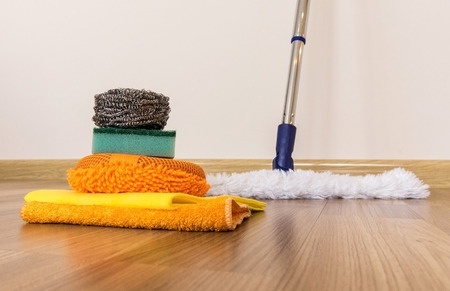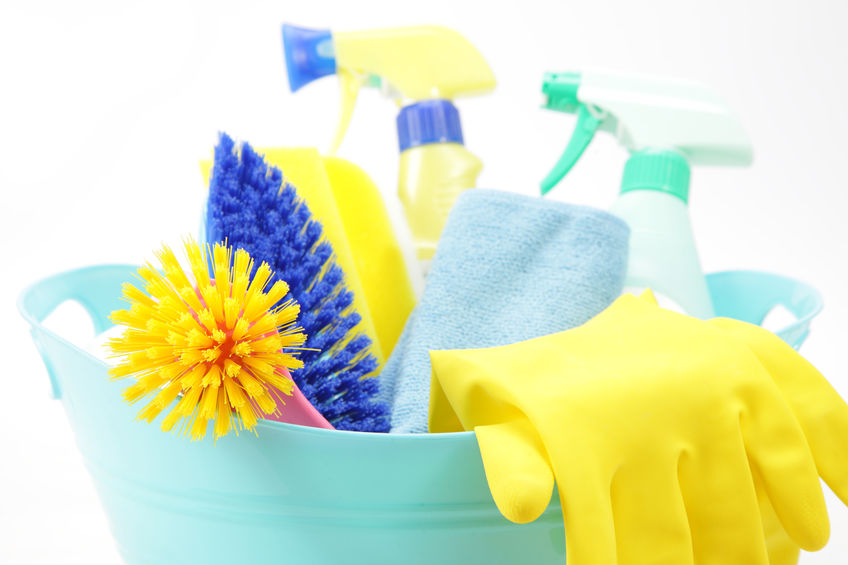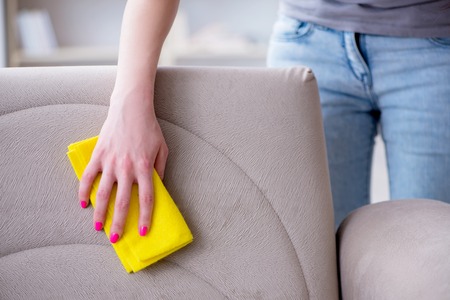- Clean Home
- Green Clean & Save
- Spring Cleaning Without Chemicals
Spring Cleaning Without Chemicals
Let's get real here. Spring cleaning without chemicals usually isn't at the top of - OK, really even on - our list of priorities. Our lackluster enthusiasm for cleaning is understandable.
Do you know anyone who turns cartwheels at the prospect of diving into corner dust bunnies or mopping up pet piddle from the living room chair? It's a common struggle, and you're not alone in it. In fact, many of us share this sentiment.
Which raises the question: Does spring cleaning - that traditional home purification rite still have a place in our cleaning-challenged lives today? The answer: Well, sort of.
As a modern mom of three very busy kids and two perfect cats (except that they shed year-round), I'm all for a clean house that's a healthy environment for my family to eat, sleep, chase catnip, and chase each other. Spring cleaning without chemicals is always a safer option.
I have an aversion to the whole house, blasting everything with hazardous cleaning products and a type of spring cleaning. Which is why I've compiled this guide for spring cleaning without chemicals.
Spring Cleaning Without Chemicals: Dust Busting
Dust happens. This gadfly of the dirt world is anything but innocuous.
Dust is composed of just about everything you don't want in your home, on your stuff, or in your family's lungs: tiny particles of sawdust, fabric, paper, carbon from smoke, flakes of skin, little pieces of insects.
If left to settle in bathrooms and kitchens, dust quickly morphs into grime. The moist air in those rooms provides the perfect breeding ground for grime and worse.
And since dirt and its dirty sister, mud, can require stronger, often hazardous cleaning products, dust is the cleaning task to tackle first this spring - and throughout the year.
By prioritizing dusting, you can rest assured that you're taking a significant step toward a cleaner and safer living space.
These tips for reducing dust in the house can help jumpstart your spring cleaning without chemicals:
Surface
Tools
- Dust Bunnies (balls) under furniture, refrigerator and in floor corners
- Vacuum cleaner with dust attachment. Use the attachment to reach beneath furniture or appliances and into far corners.
- Polished wood furniture
- Electrostatic dust cloths, which attract and hold dust with static electricity. These cloths can be washed and reused.
- Cobwebs, light fixtures, exposed beams, ceiling corners
- Lamb's wool (natural) duster, a cotton-candy shaped puff of wool on a stick. The lamb's wool's natural oils work with static electricity to grab and keep dust.
- Dust mop. It's better than a broom as it traps and holds fine dust better. You'll need to treat the dust mop first with an oily or waxy compound designed to grab and hold dust.
Final dusting tips: Don't dust with a damp rag. A damp cloth plus dust equals mud. Worse, you can smear the grime around and leave streaks where you're trying to clean.
Choose a good, reusable dust cloth instead. Clean cloth diapers work great, too.
Spring Cleaning Without Chemicals: Furniture and Upholstery
Big-ticket items like furniture and upholstery should be dusted, vacuumed regularly, and given extra cleaning attention come spring.
It's the only way to control the airborne cooking oils and dust that inevitably settle on these surfaces.
But what's the solution to a chocolate snack that sweetened the ottoman? Or grandma's makeup smudges on the sofa?
Busting these and other furniture stains is a piece of cake.
Here's how to clean furniture stains yourself:
Furniture Stain
Solution
- Grease: gravy, butter, salad dressing, olive oil, vegetable oils, mystery spills
- Blot on a small amount of rubbing alcohol. Repeat until there is no more transfer of stain to white cloth or plain white paper towel. If stain is gone, stop here. If not: Blot with a solution of 1 teaspoon dish soap or laundry detergent and 1 cup water mixed in a spray bottle. Work from outside of stain towards the center. Rinse with a damp sponge to remove detergent. Blot dry. Rinse with solution of 1/2 cup vinegar and 1/2 cup water. Blot dry. Brush when fully dry to restore texture.
- Proteins: dairy products, eggs, grass, blood, urine
- Blot with a solution of 1 teaspoon dish soap land 1 cup warm water. Blot and repeat. Rinse with vinegar solution of 1 cup white vinegar and 1 cup warm water. Blot dry.
Spring Cleaning Without Chemicals: Pet Messes
They're our best friends and sometimes our worst enemies (for a split second anyway) after we discover piddle on the living room rug or feces on a favorite chair.
You don't have to live with these pungent reminders. These stains and strong smells can be removed, especially if you catch them when fresh. Here's how:
Problem
Solution
- Pet urine on carpet and upholstery
- First, soak up as much as you can with a white rag or paper towels. Blot on a solution of 1/4 teaspoon mild laundry detergent and 1 cup warm water. Repeat until there is no more of the stain transferring to a towel or rag. If that doesn't work, try: Blotting with a solution of 2 teaspoons ammonia and 1 cup water. Rinse with warm water. Repeat. Blot dry.
- Feces on carpet and upholstery
- Gently scoop away excess with a spoon or spatula. Blot with ammonia solution (see solution above). Let it soak for several minutes. Blot, and repeat until the stain is removed. Rinse with cold water. Blot dry.
- Pet hair on carpet
- On carpet, use a vacuum with a good beater brush or brush roll. Or run a squeegee over the area. Just swipe it over the carpet and watch pet hair cling to the brush.
- Pet hair on upholstery
- Use a pet rake - a special brush with crimped nylon bristles - on fur covered upholstered sofas and chairs. Use light, even strokes to remove the fur. Velour brushes, tape rollers, and even tape wrapped around your hand will also work.
A final tip for pet messes: Avoid using steam cleaners to clean urine odors from carpets or upholstery. The heat will permanently set the smell and the stain by bonding the protein to manufactured fibers.
Spring cleaning without chemicals can still get the job done.
- Clean Home
- Green Clean & Save
- Spring Cleaning Without Chemicals






